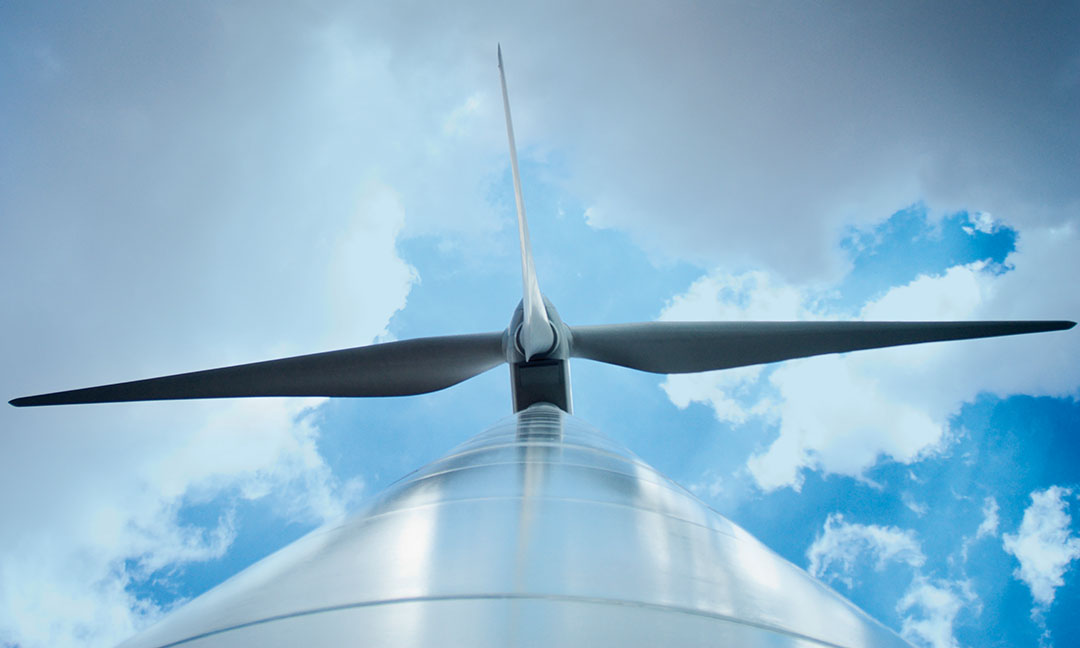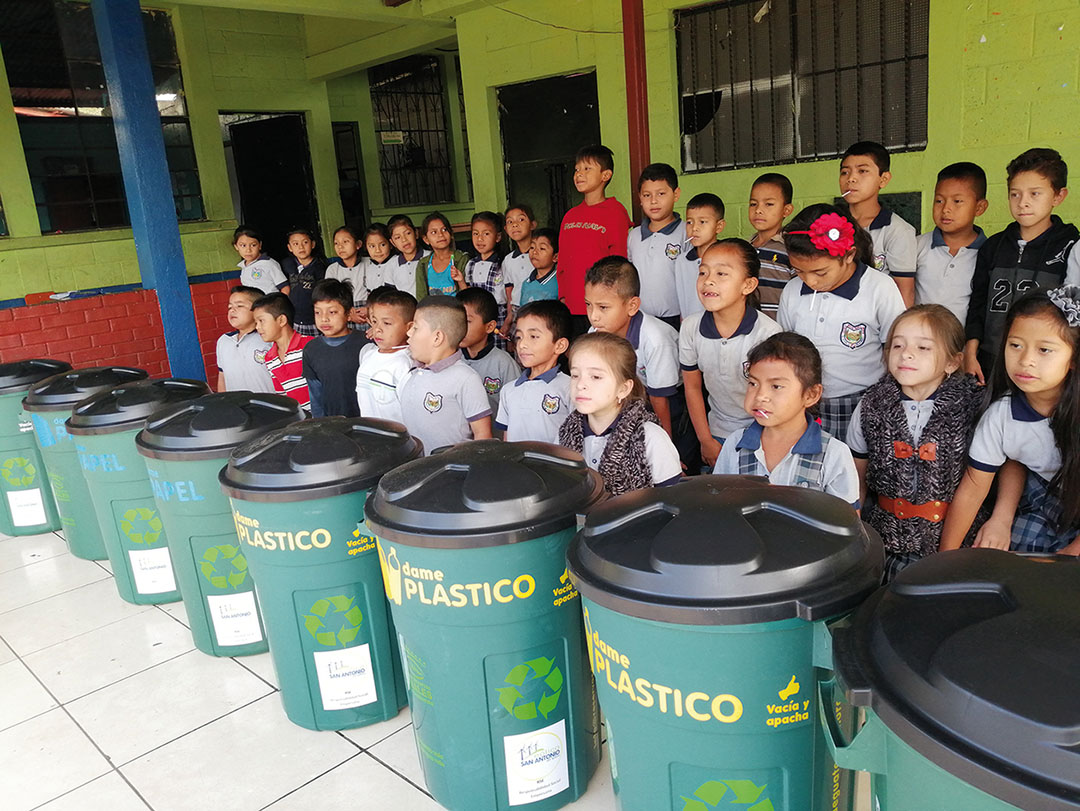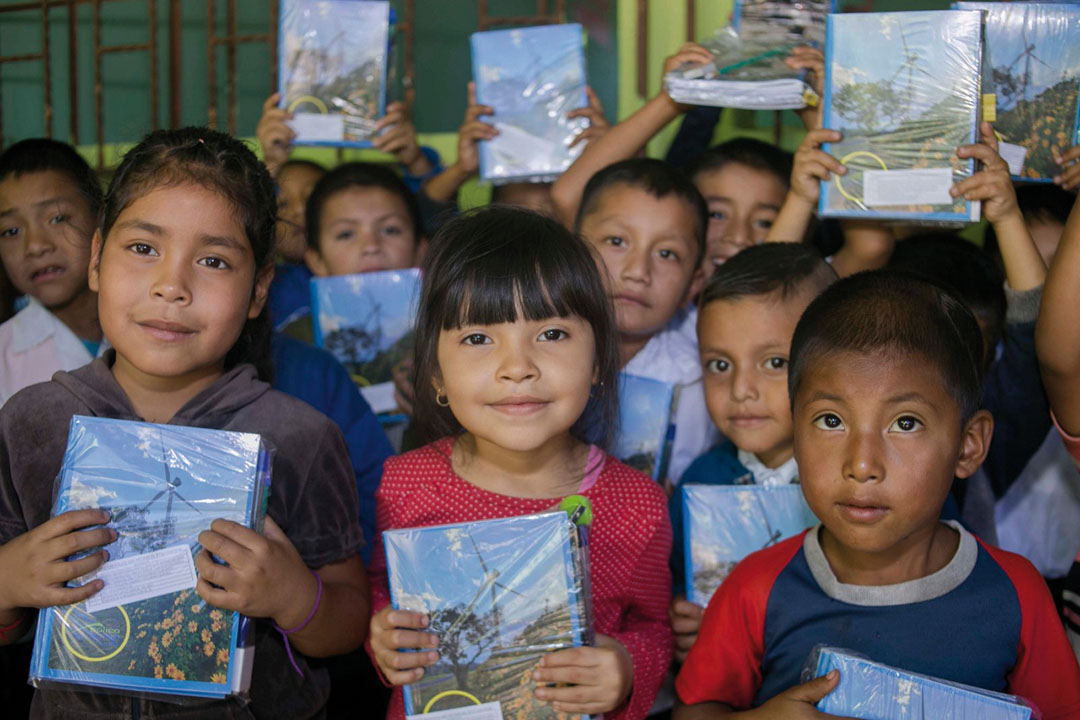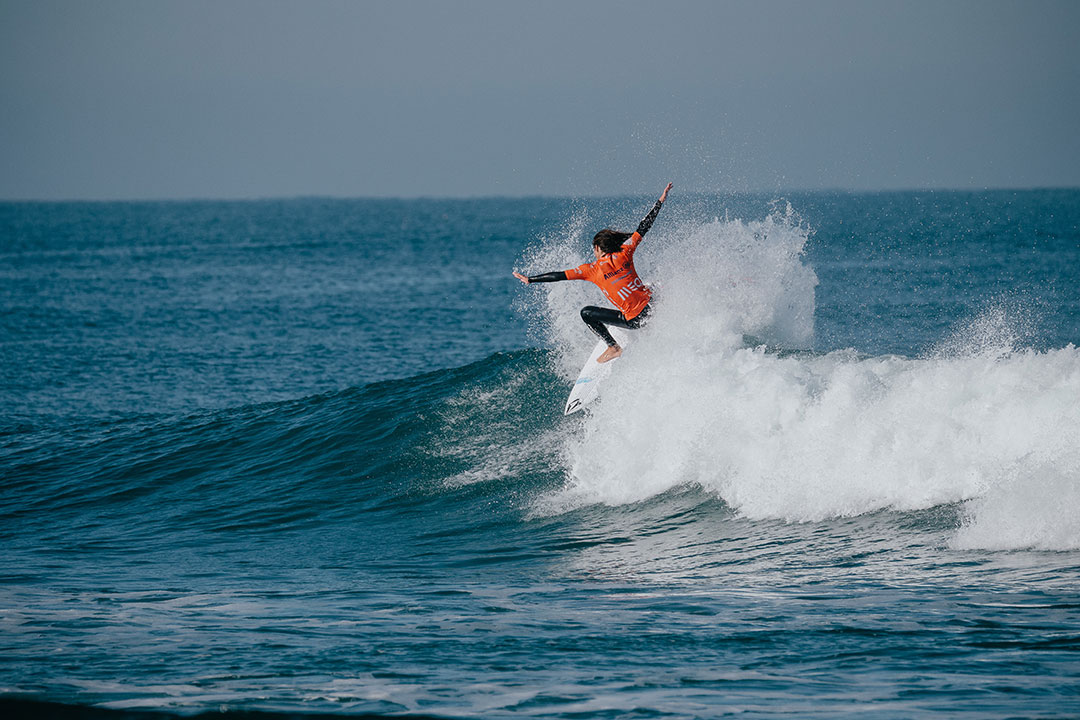
Renewing Guatemala
WINDS OF CHANGE
The sign at the bus stop reads Plaza dos Dolores, the name of the village. Sheltering from the hot sun, some of the locals chat, in view of the children’s playground. They’re mostly women and children, grateful for the shade of the brightly coloured bus shelter. We are in one of the four villages in the municipality of Villa Canales, where the local economy, schools, welfare and the environment have all started to change thanks to the wind and the first wind energy project in Guatemala.
Renewables have been growing in the last 15 years, but there is still a long way to go as coal is still used to generate much of the power supply (coal is the second energy source, after hydropower). The turbines arrived in May 2015 and now turn in harmony with local agriculture, in this municipality close to Guatemala City and which is home to some 150,000 people. The main crops in this area are pineapple (Villa Canales is the pineapple capital of Guatemala), coffee and sugar cane.
The San Antonio El Sitio wind farm is located in the village of Los Llanos, at the 53 km mark on the road from Santa Elena Barillas to Dolores. The Jerónimo Martins Group is supporting the project, by buying carbon credits to offset the environmental footprint generated by FEED. Through the purchase of the carbon credits, cleanly produced energy is fed into the local grid instead of energy produced from polluting sources, thus offsetting greenhouse gas emissions.
Sixteen wind generators using Danish technology and with a capacity of 55.2 MW have brought light and power to 60,000 homes. But the region and its people have gained much more than a source of clean and affordable energy. First and foremost, the project has brought jobs and training in sustainability: 600 people were employed during the construction phase and 19 are still employed to operate the wind farm. The region has also received new infrastructures, support for its schools and community facilities.

The local company that runs the wind farm has a close relationship with the local people and allocates economic resources to meet the most urgent social demands. The project is also designed to maintain a healthy relationship with the locals, based on respectful coexistence and corporate social responsibility rules. Community involvement has been a key feature, with schools playing a central role. Students and teachers learnt how to sort waste and have had the chance to apply this knowledge using the recycling bins donated by the San Antonio El Sitio wind farm. Furthermore, they continued the work at home, carrying out assignments which contributed to changing their daily lives in the classroom. Gerber Herrarte, the head teacher at the Aldea Los Dolores primary school, explains how the young people’s efforts, at school and at home, have been rewarded: “We collected rubbish (plastic bottles, glass, paper, cans) and gave it to a company in exchange for a payment, which we then put towards building up an awning.
The rural landscape is dominated by agriculture and livestock, which provide a livelihood to a large majority of families.
In the end we had an exhibition of objects made from reused materials. The programme made a big impression on the young people and the teachers.” In all, it was possible to collect 3.5 tonnes of rubbish. Improvement works and initiatives were undertaken in 12 schools, namely the construction of three sports pavilions and the revamping of two others, as well as providing study grants. Mynor Guzmán, head teacher at the Augusto Mejía Medina School, in the village of San Rafael, told us: “The first thing we did was install a new roof. Then there was painting, maintenance work on the building, a kitchen extension and improved ventilation.”

Mónica Charro, secretary of the El Jocotillo Community Development Council highlighted the desks and materials provided at the start of the school year. Ángel García, a teacher at El Jocotillo School No. 2 also mentioned the “concern about having a pleasant school environment,” with improvements made to the sanitary facilities and water tanks. A new community hall, designed to cater for emergency situations in Los Llanos, was one of the other main developments. María Victoria Zamora, a member of the Aldea Los Dolores neighbourhood association, described the changes as “a legacy for our children and grandchildren.” Other initiatives she mentioned included the distribution of personal hygiene kits to mitigate the impact of the Covid-19 pandemic.

Villa Canales receives new infrastructures, support for its schools and community facilities.

ELECTRICITY FOR 60,000 HOUSEHOLDS

16 WIND TURBINES

80 TONNES OF EMISSIONS AVOIDED

5,500 SCHOLARSHIPS


